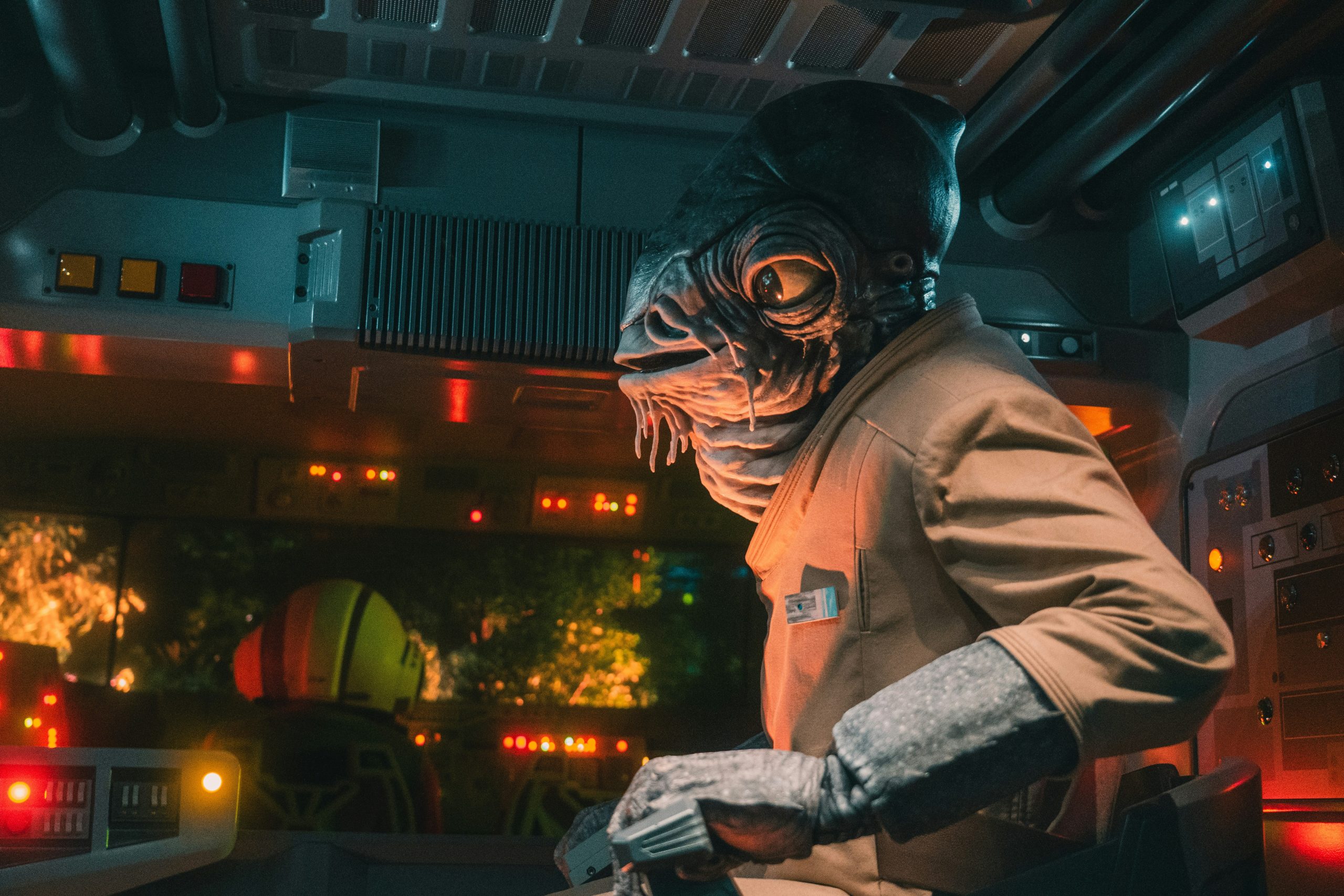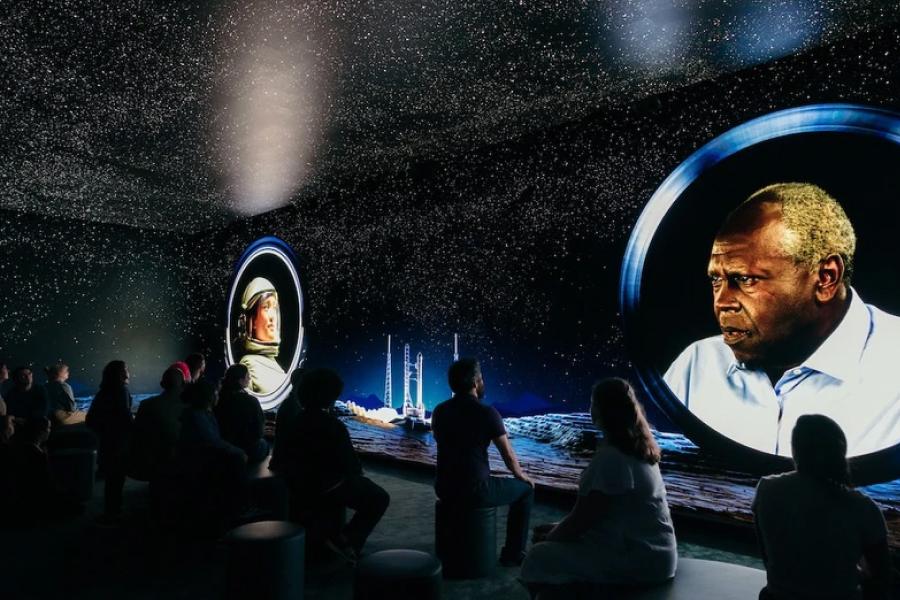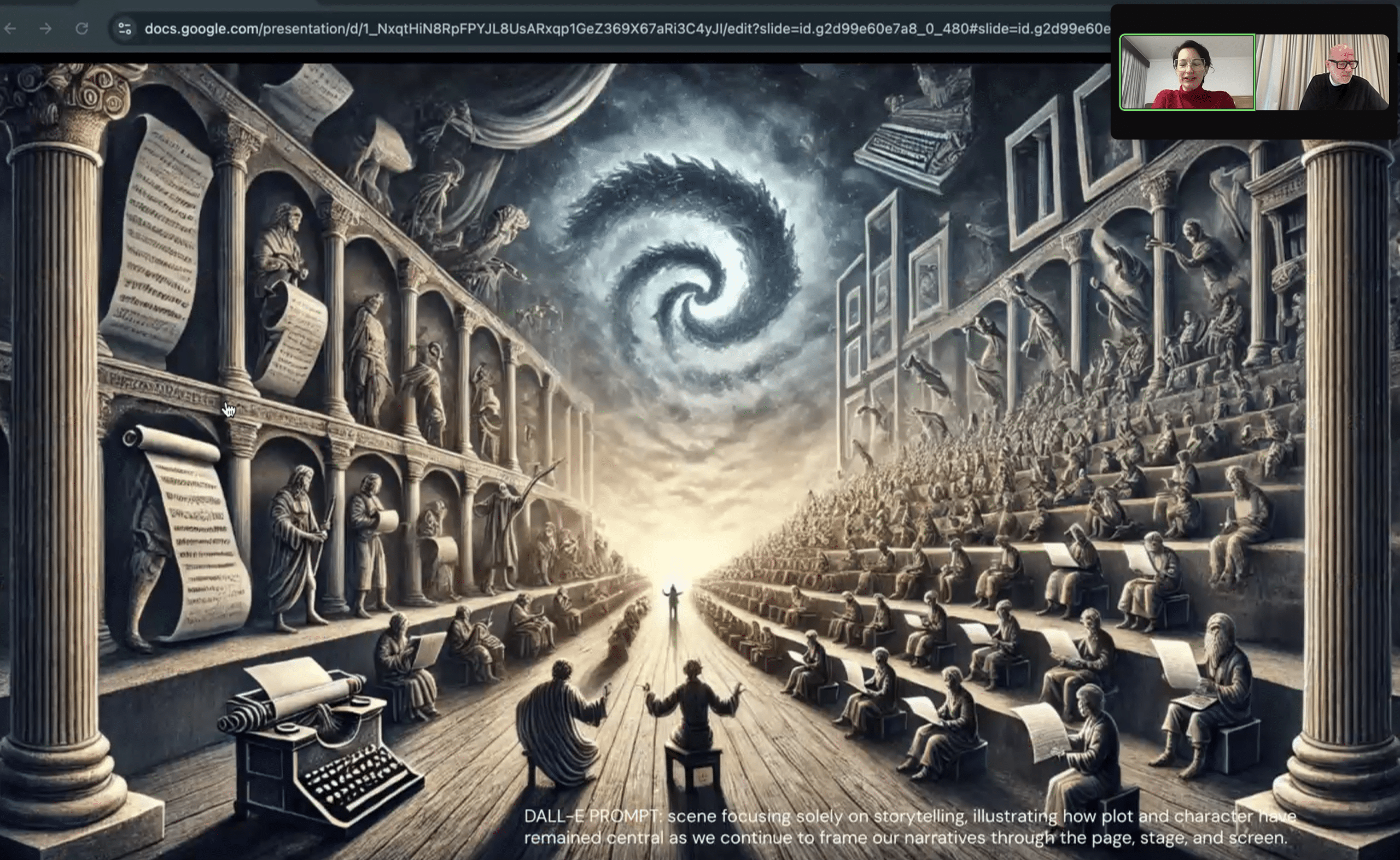How do you transform the seed of an idea into an immersive experience that captivates and engages?
Immersive storytelling places the visitor at the heart of the narrative, turning passive audiences into active participants. Unlike traditional, linear storytelling, it takes its cues from transmedia storytelling, with multiple heroes, multiple events and obstacles, and multiple (or even no) endings.
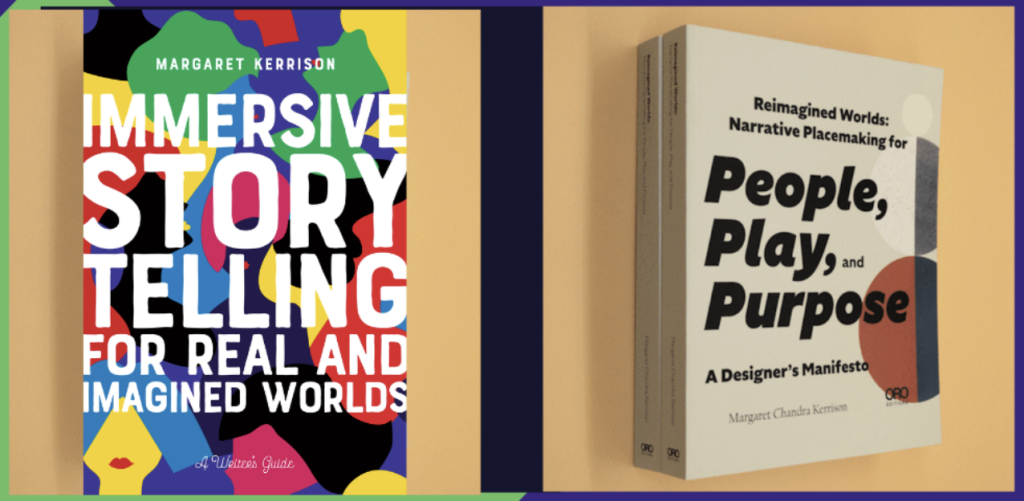
Margaret Kerrison is an experiential creative lead and former Disney Imagineer who explores the art of bringing stories to life both through her books and through her work for the likes of BRC Imagination Arts and Airbnb Experiences. She specialises in narrative placemaking in built environments including theme parks and location based entertainment, and worldbuilding that makes your visitor the centre of the experience.
Her ideas have been unpacked in three books:
- Immersive Storytelling For Real And Imagined Worlds: an introduction to immersive storytelling originally designed for writers, but has since been picked up by everyone from scientists to urban planners and architects.
- Reimagined Worlds: Narrative Placemaking for People, Play and Purpose: a designer’s manifesto exploring the question, how do we create shared places that are meaningful to people? If we don’t engage people in a sense of play, help them connect, and help them fulfil a purpose, there’s no reason to return.
- The Art of Immersive Storytelling: Strategies From The Gaming World: released next year, this will explore the parallels between video games and immersive spaces, and how the same techniques that pull people into game worlds can immerse them in experiences.
In this report, you’ll learn insights and practical tools drawn from Kerrison’s extensive experience, like The S.T.O.R.Y. Method and the ISQ Wheel. She’ll guide you from the spark of inspiration to the creation of fully realised worlds, using the Star Wars: Galaxy’s Edge project she did for Imagineering, which sees its 5-year anniversary this year, as a case study.
What Is Immersive Storytelling?

Immersive storytelling is when we use tools and techniques to transport our audience into a different time, place, story, and most importantly emotional state.
The best examples of this emerging discipline share five characteristics:
- Emotional
- Engage all senses
- Create a believable sense of time and place
- Invite us to participate and play
- Promote social interaction
Above all, creating an immersive narrative helps to answer this fundamental question for your audience: why should I care about your experience? Why should I devote my time, attention, energy and money to it?
The Difference Between Story & Narrative
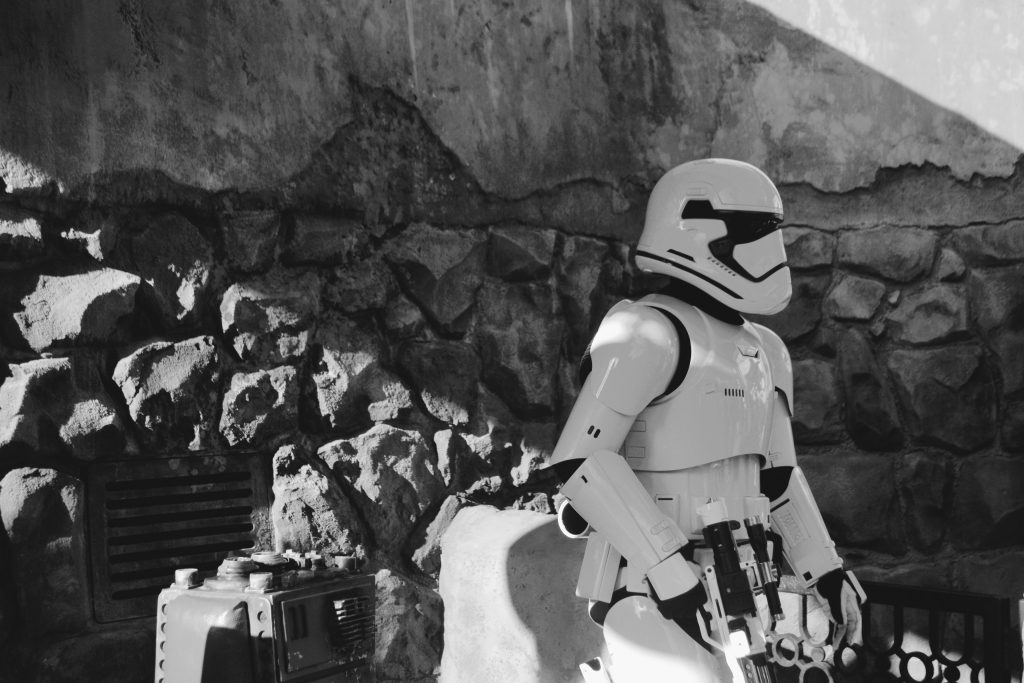
The classic Hero’s Journey story structure is an example of a linear narrative with events and obstacles, and a three-act structure of beginning, middle and end. However, in this story the guest doesn’t have a role to play except as a spectator, unless they are the hero themselves.
We see this linear story structure, also known as a “book report” structure, in many theme park rides. This serves a purpose: it’s still fun, and children in particular are drawn to repeatability and structure.
A narrative, on the other hand, isn’t linear. It has multiple layers or characters, all of whom are on a unique journey with unique events and obstacles. Their lives intersect at one or more points. Sometimes there are no endings. Above all, your audience are the heroes, not spectators. (For more on this idea, see Stephanie Riggs on The End of Storytelling.)
Narrative manifests when there is more than one hero, storyline, and quest. It forms a broader context of a series of worlds that share a purpose and theme, and where you can engage all the senses to feel a part of that world. It’s an ecosystem in which multiple stories share the same rules of engagement, abide by the same parameters, and visitors are connected. It doesn’t have to be sequential or particularly dramatic: but it must belong in the same world with a shared community under a predetermined context.
For Galaxy’s Edge, Kerrison and her team developed a 277-page creative guide outlining the guiding principles and design details of the narrative. This was designed for an internal team, but evolved into books, games and other formats.
Other immersive experiences with sprawling narratives might feel unsatisfying (projection-mapped art exhibitions, perhaps) or overwhelming (sensory overload experiences), but they all serve a purpose as we populate and educate mass audiences on what an immersive experience is.
We could even say that a narrative is the stage for people to have an experience. Modern festivals such as Boomtown, for example, are a non-linear environment based on “organic collaborative narrative” where you don’t design an experience, but design for an experience to take place.
The S.T.O.R.Y Method To Design A Narrative
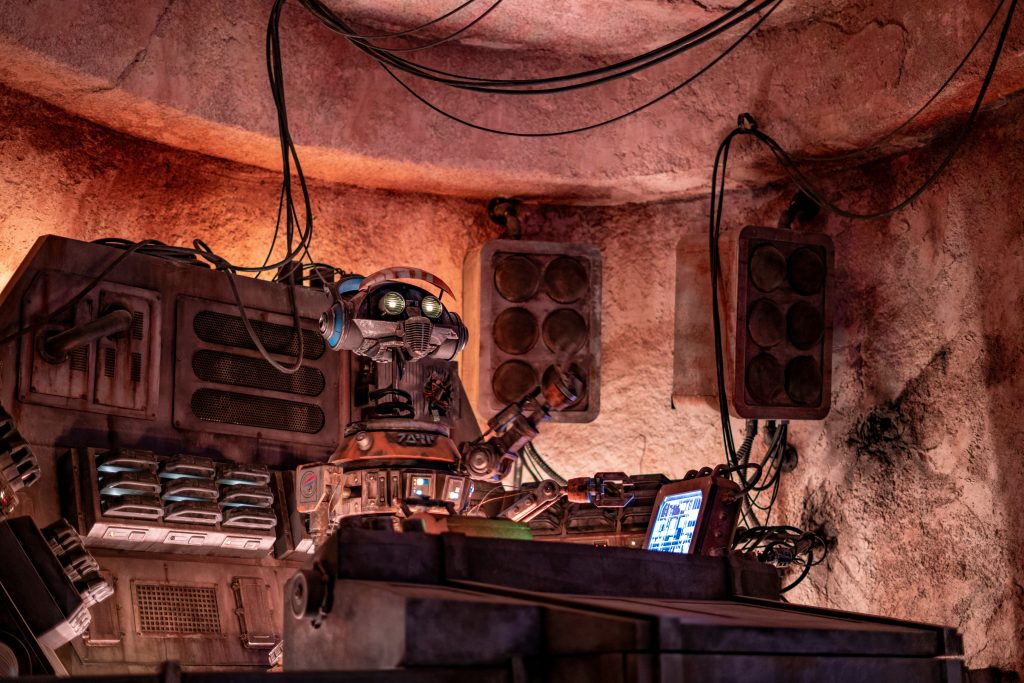
At the core of designing a narrative we want to move people, get them to feel, and compel them to change.
“We’re in the business of emotion: and to get to the heart, a good narrative has to come from the heart.” Margaret Kerrison
To get there, Kerrison has developed the S.T.O.R.Y Method: the first five questions you should ask on any experience design project.
- Share: Why Share this story with the world? Finding the why is the centre of any narrative. When this comes from a place of honesty, it’s more likely to resonate universally. Honesty always finds truth, and with truth comes the opportunity to open your audience’s minds.
- Theme: What’s the Theme of your story? Theme drives narrative thrust. It contributes to the building of the main story beats, those moments of change that move it forward.
- One-Of-A-Kind: What makes your story One Of A Kind and unique? The competition for attention is immense – so in order to be memorable, and quickly capture the imagination, you need to find what makes your story different. Has it never been told – or are you telling it from a different perspective or medium?
- Reflect: Why are you the best person to tell the story? Knowing who you are will help give a perspective and unique take to the story that makes it worthy of attention.
- Yearn: What is the visitor Yearning to experience? What is their wish fulfilment? Do they want to follow in the hero’s footsteps, or become heroes themselves? Ask yourself what you want your audience to feel, both when they walk in, and when they walk away. What’s the transformation or emotional takeaway you want to lead them towards?
Kerrison summarises this last point in the formula: Wishing + Doing = Becoming.
When you put your visitor into action – to jump, climb, discover, explore, hide – they have the opportunity to be transformed. When you give them choices, you’re not only giving them agency, but a reason to engage.
To create drama, put your guest into action and make those actions have consequences and play a part in the larger narrative. The experience then becomes memorable and embodied, which in turn becomes transformational. You’re giving them aspiration, purpose, and the opportunity to become part of something bigger than themselves.
The 5 Ws & 1 H: How To Find The Narrative Of Your Design
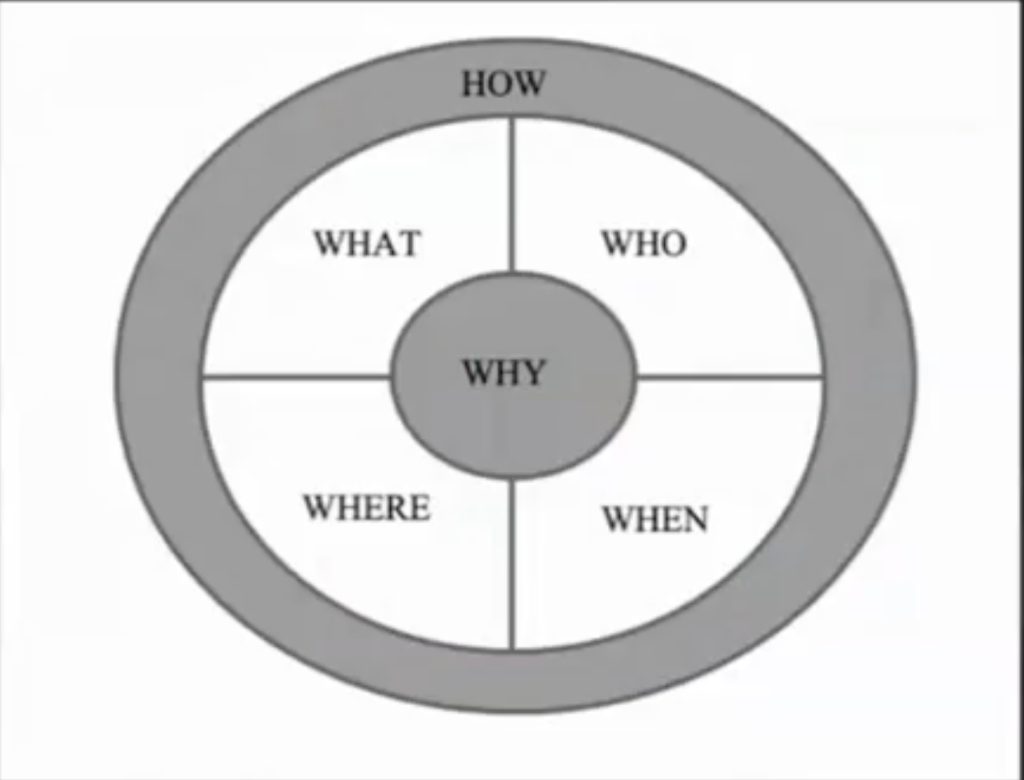
When designing your narrative, Kerrison uses the “5 Ws & 1 H”:
- Why
- Who
- What
- Where
- When
- How
She sees these as a wheel, with “why” in the core holding the whole experience together, the other Ws radiating out from it, and “how” as the wrapper around it. Experience designers often make the mistake of jumping into the “how” first without looking at the “why”.
Here’s how to work through the different sections of the wheel.
1. Why are we doing this?
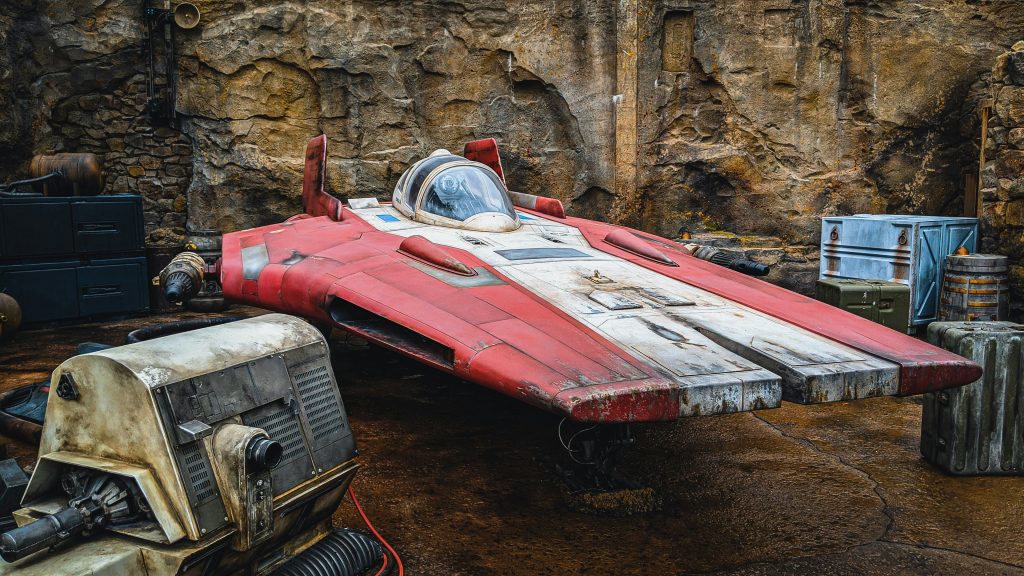
The “why” sets the context for your experience: why does it exist? Why is it meaningful? Explore possible themes so your guests can experience something that moves and hopefully transforms them, and which informs your design decisions.
For Galaxy’s Edge, Kerrison worked closely with Lucasfilm to understand the stories that came before and how they could inspire the narrative. She came up with a theme around how one spark can make a mark in the entire galaxy, and then asked why people would be coming to this planet. The answers informed the experiences that should be in the park, which became the emotional anchors of the whole experience and the bucket list for any Star Wars fan.
Establishing the “why” of the land established their point of view as a designer and gave context to the narrative. It helped answer the question of why guests are coming, and how to move from the transactional to the emotional. This can happen through small moments as well as spectacle, such as in-world F&B and retail.
2. Who are your guests?
When you ask who your guests are and how you want them to feel, you give them agency and a role to play, so they feel like they belong in that world.
In Galaxy’s Edge, you can be who you want to be, but within the context of that world. You can be a Jedi, a first order loyalist, or a traveller to the planet Batuu.
3. What is the promise?
When you ask this question, you’re helping your guests answer what they came here to do. It connects action to wish fulfilment, whether that wish is to build a lightsabre or droid, encounter a Stormtrooper, or find the Mandalorian.
A promise doesn’t always have to have a strong IP. The concept of the restaurant at Epcot is very simple: to dine in space. But a kid who goes through it, imagining and embodying it, and leaves believing they’re one step closer to their dream of reaching the stars, is a great emotional takeaway from the guest promise.
4. Where is the narrative set?

Authenticity and specificity are key to any story. At Galaxy’s Edge, there was a backstory that the land had faded from its glory days that ran through everything. Every location served a purpose and was a specific emotional anchor to the Star Wars story. Every building serves a purpose driven by the story.
5. When is the narrative set?
Determining the when helps in the decision making of your visual design and also places guests firmly within the moment. Every element of the narrative and visual design should speak to this timeframe: past, present, future, or some alternate fantasy timeline.
6. How does it manifest into design?
When you’ve answered all your Ws, you can finally get onto the how: how will your guests immerse in a world experienced through all senses? This is the last phase, and where most of the work will be done.
“Each discipline is a piece of the puzzle that goes into creating a unified narrative and holistic world, and all the work done up to this stage ensures we’re all building towards the same picture.” Margaret Kerrison
It’s worth noting that people are always interested in what it looks like, rather than what it feels like. For Galaxy’s Edge, Kerrison put together a chart of different locations showing not only how they should look, but how they should feel: mysterious, energetic, dynamic, and so on. This was taken into account at every level, down to the detail of the fabric.
The WXO Take-Out

When you bring a narrative designer into a project early and follow this structure, it can have a big impact on the overall success of your experience. Story and narrative aren’t something that can be shoehorned in later down the line, but should be at the very heart of your experience.
Keep it simple, specific, and surprising, and use the power of narrative to drive connection between people. When you ask all these questions and create a narrative, guests will walk away feeling like they care, they’re part of it, and they want to take action.
“Narrative gives meaning to our lives and our world. In a well-designed experience, it draws parallels to our everyday lives – and it becomes not just magical and memorable, but also meaningful long after the experience ends.” Margaret Kerrison
So next time you’re designing an experience, ask yourself:
- How does your approach to immersive storytelling differ when creating experiences for real-world environments versus imagined worlds?
- What role does collaboration play in the immersive storytelling process, and how do you bring diverse teams together to create a cohesive world?
- How do you ensure that visitors or players feel truly connected to the story you’re telling within an immersive experience?
Want to come to live Campfires and join fellow expert experience creators from 39+ different countries as we lead the Experience Revolution forward? Find out how to join us here.

